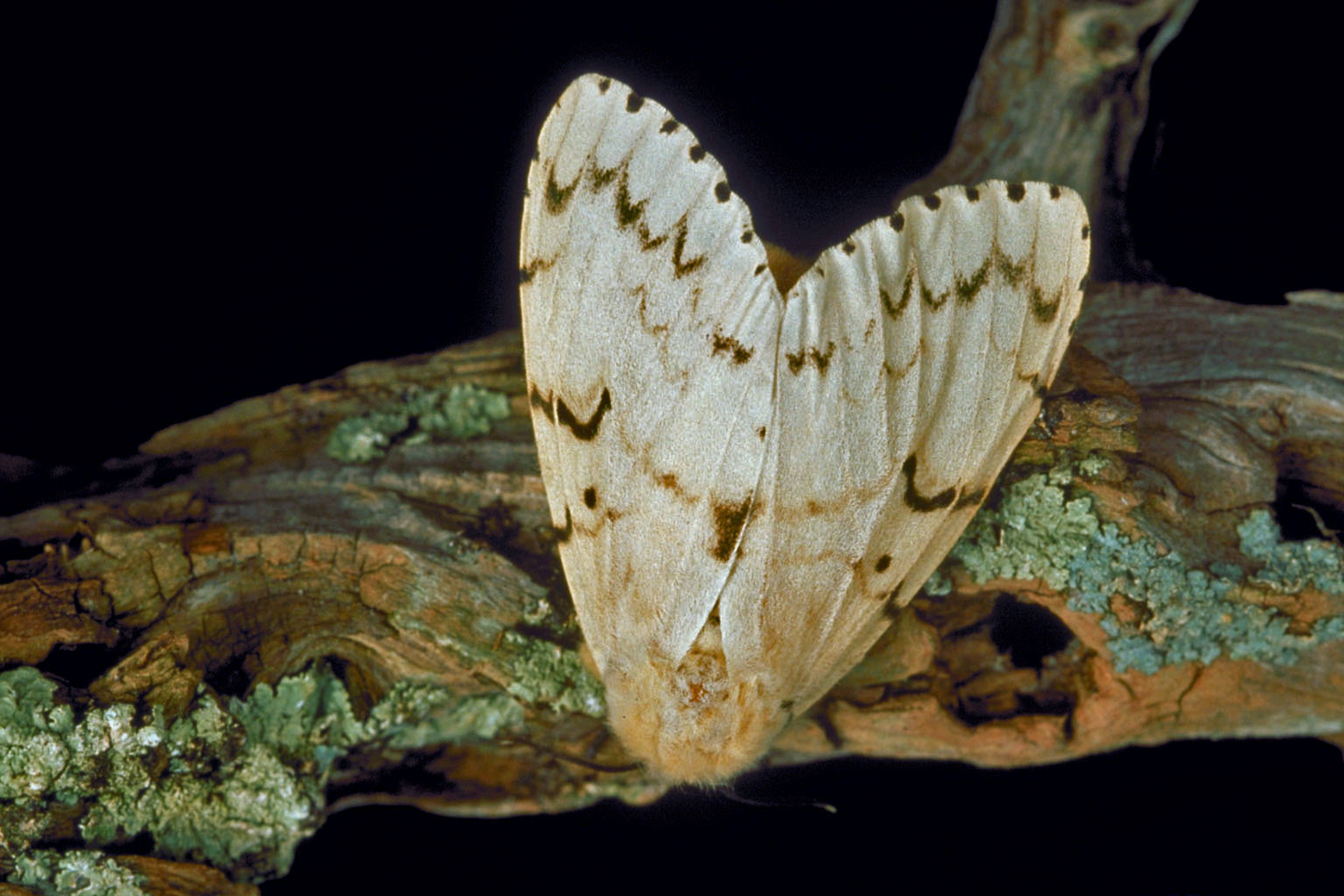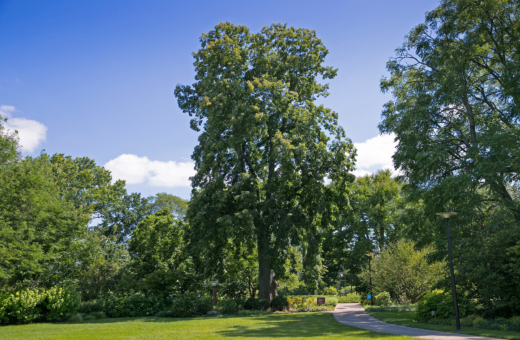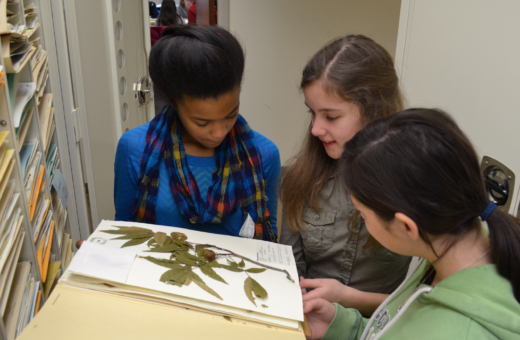June 24, 2022
On Monday morning from 6:45 to 7:30 a.m., the USDA Forest Service in collaboration with the Illinois Department of Agriculture will be aerial spraying areas of the East Side of The Morton Arboretum to help mitigate invasive spongy moths (formerly known as European gypsy moths). Spongy moth caterpillars have voracious appetites and can defoliate healthy trees and weaken them, making them vulnerable to a secondary invasion.
The treatment–which is part of the National Slow the Spread Program–is nontoxic to humans and animals, including the moths themselves. It works by disrupting the moths’ mating behaviors, thereby reducing the potential number of new offspring.
Why is the Arboretum being treated for spongy moths?
The treatment is being conducted as part of the National Slow the Spread Program by the USDA Forest Service in collaboration with the Illinois Department of Agriculture. The Arboretum is just one of many sites to be treated in infested areas in northern and north central Illinois, including Cook, DuPage, Kane, Kendall, Lake, LaSalle, McHenry, Will, Boone, and Winnebago counties.
Why are spongy moths a problem?
The moth has a big appetite for oaks and 500 other species of trees and plants. Each caterpillar can consume up to 11 square feet of foliage from early May through June. When they are abundant, the caterpillars can completely defoliate trees. Although healthy trees can survive defoliation, repeated removal of leaves can weaken or kill a tree. Older, less vigorous trees that are already stressed by factors such as drought can be killed by a single defoliation. This pest is a substantial threat to Illinois forests and suburban landscapes.
What kind of treatment is being used?
Mating disruption is a control strategy used to manage low-level spongy moth populations by preventing male moths from finding mates. This is accomplished by using airplanes for a broadcast application of female spongy moth pheromone, the powerful scent produced by flightless females to attract mates. Males become overwhelmed and confused by the strong scent and, being unable to find female moths, die of old age without producing offspring. The treatment is not harmful to the moths.
Will the treatment be noticeable or harmful to Arboretum guests?
The treatment, called SPLAT, is nontoxic to humans and animals. It is applied through waxy droplets in late June, just before adult moths would normally emerge and mate. Only about seven ounces are used per acre. A few tiny droplets may be noticed but can be washed off with warm soapy water. SPLAT droplets will not damage the finish of cars. The caterpillars of other moths and butterflies will not be harmed.
Where did spongy moths come from?
The spongy moth was accidentally introduced to North America from Europe in 1869. Since that time, the moths have spread slowly. Currently, a few counties in northern and north central Illinois are considered infested, although small numbers of spongy moths also periodically appear in other areas throughout the state.
How can I tell if my tree is infested with spongy moth caterpillars?
If you have a tree that gets thin at the top of the leaf canopy during late spring and early summer, spongy moth caterpillars are a possibility. (The caterpillars start eating leaves at the top of a tree and work down.) To check, tie a band of fabric around the trunk at about eye level. The caterpillars descend to the ground each day and climb up the trunk to feed at night, so some of them will likely get caught in the fabric and the next morning you will be able to find them in the cloth, identify them, and squish them. The caterpillars are distinctive–dark with rows of red and blue spots and bristly hairs. For more information on how to deal with spongy moths, contact the Plant Clinic.
Where can I get more information about how these moths are treated in Illinois?
For further information, please contact the Illinois Department of Agriculture’s Northern Field Office, 2280 Bethany Road, DeKalb, IL 60115, 815-787-5476, or see their website.



